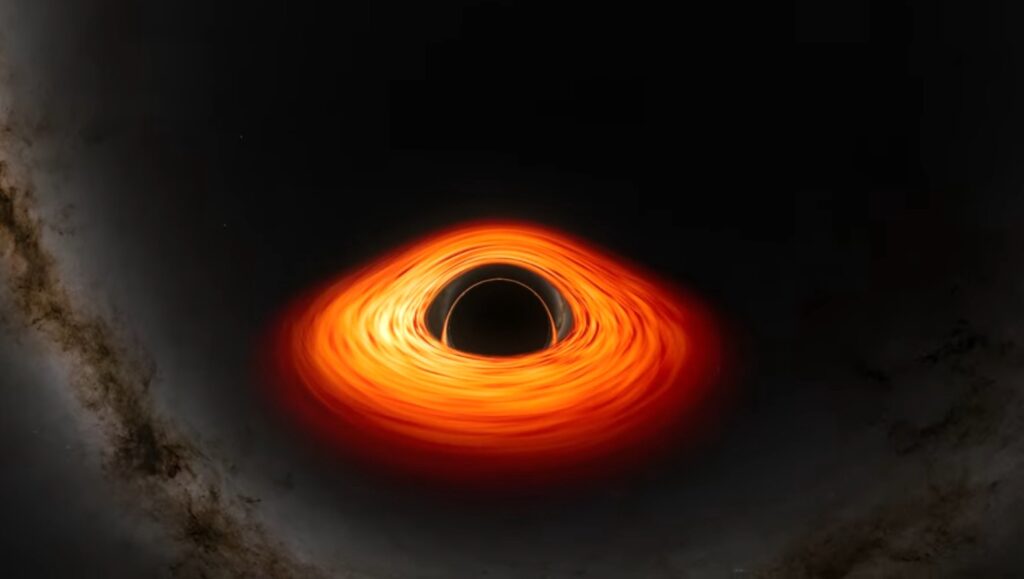
NASA’s latest black hole visualization lets viewers experience the boundary of a black hole, known as the event horizon, through immersive supercomputer-generated scenarios. Created by Jeremy Schnittman at NASA’s Goddard Space Flight Center, the visualization offers two outcomes: one where a virtual camera narrowly escapes the event horizon, and another where it crosses into the black hole, leading to its inevitable destruction.
These visualizations, crafted with the help of fellow scientist Brian Powell, were produced using the Discover supercomputer and took about five days, generating 10 terabytes of data. They illustrate the effects of Einstein’s general theory of relativity and are available as explainer videos, 360-degree videos, and flat all-sky maps.
The visualization centers on a supermassive black hole, akin to the one at the heart of our Milky Way, with a mass 4.3 million times that of the Sun. This scenario emphasizes the difference between supermassive black holes and stellar-mass black holes—the latter having stronger tidal forces that can disintegrate objects before reaching the event horizon.

As the camera approaches the black hole, viewers can observe the warping of light and space-time, culminating in a dramatic view of a flat accretion disk, photon rings, and a backdrop of stars. The simulation details how objects approaching a black hole experience ‘spaghettification’, where they stretch under extreme gravitational forces.
For those watching the visualization from a distance, the camera appears to freeze at the edge of the event horizon due to the extreme warping of space-time. Once the event horizon is crossed, it takes only 12.8 seconds for the camera to reach the singularity, where conventional physics no longer applies.
In an alternative scenario where the camera does not cross the event horizon, an astronaut would experience time differently, returning from a 6-hour journey 36 minutes younger than colleagues who remained farther away from the black hole. This effect is even more pronounced near rapidly rotating black holes.
“This situation can be even more extreme,” Schnittman noted. “If the black hole were rapidly rotating, like the one shown in the 2014 movie ‘Interstellar,’ she would return many years younger than her shipmates.”
And So Began The Adventures of Starman 🚀 pic.twitter.com/Knmc2fOlxE
— Eli Burton (@EliBurton_) May 5, 2024

